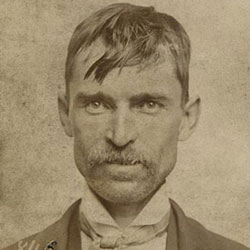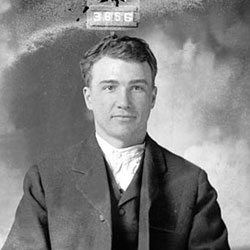
Giants of the Cornhusker State: A Look at Nebraska’s Enduring Human Legacy
Nebraska, often perceived as the quintessential ‘flyover state,’ a vast expanse of cornfields and quiet towns, holds a human history as rich and complex as any. Far from being a mere waypoint on the journey west, its plains have been a crucible for resilience, innovation, and profound social change. From the ancient Indigenous nations who first called this land home to the pioneering spirits who tilled its soil, and the political titans who shaped its future, Nebraska has nurtured a remarkable array of individuals whose legacies resonate far beyond its borders. Their stories are not just footnotes in local history; they are integral chapters in the grand narrative of America.
The First Guardians: Standing Bear and the Fight for Personhood

Long before the first European settlers cast their eyes upon the vast prairies, the land now known as Nebraska was home to thriving Indigenous nations: the Pawnee, Omaha, Ponca, Otoe-Missouria, Lakota, and others. Their history here stretches back millennia, marked by sophisticated cultures, intricate social structures, and a deep connection to the land.
Among the most pivotal figures from this era, whose struggle for justice transcended tribal boundaries, was Standing Bear (Machunazha), a chief of the Ponca tribe. In 1877, in a tragic act of forced removal, the U.S. government compelled the Ponca to leave their ancestral lands in northeastern Nebraska and relocate to Indian Territory (present-day Oklahoma). The journey was brutal, leading to the deaths of many, including Standing Bear’s young son, Bear Shield.
Heartbroken, Standing Bear vowed to bury his son in their sacred homeland. Defying federal orders, he led a small band of Ponca back north. Arrested upon reaching Omaha, his plight caught the attention of local journalists and a compassionate Brigadier General George Crook, who, sympathetic to their suffering, secretly informed lawyers of their situation. This led to the landmark 1879 trial of Standing Bear v. Crook.
In a federal courtroom in Omaha, Standing Bear eloquently pleaded his case, asking, "My friend, I am a man. The same God made us both." His simple yet profound declaration resonated deeply, challenging the prevailing legal interpretation that Native Americans were not "persons" under the law and thus had no right to sue or seek protection. Judge Elmer S. Dundy, in a historic ruling, declared that "an Indian is a person within the meaning of the laws of the United States." This decision was a monumental victory for Native American civil rights, laying the groundwork for future legal battles and the recognition of Indigenous humanity. Standing Bear’s courageous stand in a Nebraska courtroom forever changed the legal landscape for Native peoples across the nation.
Shaping the Prairie: The Literary Voices of the Frontier
As the 19th century drew to a close and the 20th century dawned, a new wave of settlers, largely of European descent, poured into Nebraska, drawn by the promise of free land under the Homestead Act. Their struggles, triumphs, and profound connection to the unforgiving yet beautiful landscape found their voice in two of America’s most celebrated authors, both deeply rooted in Nebraska’s soil.
Willa Cather arrived in Nebraska from Virginia as a child in 1883, settling in Red Cloud. The vast, treeless prairie and the diverse immigrant communities—Swedes, Bohemians, Norwegians—left an indelible mark on her imagination. Her novels, including O Pioneers! (1913), The Song of the Lark (1915), and the Pulitzer Prize-winning My Ántonia (1918), masterfully captured the raw beauty and harsh realities of pioneer life. Cather immortalized the spirit of the homesteaders, particularly the strong, resilient women who carved lives out of the wilderness.
Her prose often emphasized the profound impact of the land itself on human character. As she wrote in O Pioneers!, "The land was the only thing that mattered. The people were as an afterthought, clinging to the land, trying to subdue it, always struggling against it, and always, in the end, becoming part of it." Cather’s work is a timeless testament to the grit, isolation, and eventual belonging that defined the Great Plains experience, firmly placing Nebraska on the literary map.

Complementing Cather’s evocative portrayals was Mari Sandoz, a true daughter of the Sandhills, born near Gordon, Nebraska, in 1896. Unlike Cather, who often romanticized aspects of the prairie, Sandoz offered a starker, more unvarnished account of life on the frontier. Her seminal work, Old Jules (1935), a biography of her Swiss immigrant father, is a brutal yet compelling depiction of the hardships, eccentricities, and sheer tenacity required to survive in the remote Sandhills.
Sandoz was also a prolific historian of the American West, renowned for her meticulously researched biographies of Native American leaders, including Crazy Horse: The Strange Man of the Oglalas (1942) and Cheyenne Autumn (1953). Her work provided vital, often sympathetic, insights into the Indigenous experience during the Plains Wars, challenging prevailing narratives. Mari Sandoz was not merely a chronicler; she embodied the rugged independence and intellectual rigor of the Nebraska spirit.
Political Titans: Orators, Progressives, and Unicameral Visionaries
Nebraska’s fertile ground also produced political figures who left an indelible mark on both state and national policy, shaping debates from the populist era to the progressive movement.
No discussion of Nebraska’s political giants is complete without William Jennings Bryan, "The Great Commoner." Born in Illinois, Bryan made Nebraska his home in 1887, quickly rising through the ranks as a charismatic orator and advocate for the common person. He championed policies like bimetallism (free silver), which he believed would benefit farmers and laborers struggling under the gold standard. His electrifying "Cross of Gold" speech at the 1896 Democratic National Convention, where he famously declared, "You shall not crucify mankind upon a cross of gold!", secured him the presidential nomination three times, though he never won the White House.
Bryan’s influence extended beyond economics; he was a devout Christian, a pacifist, and later a key figure in the Scopes Monkey Trial. His populism, anti-imperialism, and moralistic fervor made him one of the most polarizing yet undeniably influential figures of his era, embodying the agrarian unrest and reformist zeal that swept across the American heartland.
Decades later, another Nebraskan, George W. Norris, would redefine progressive politics. Serving in Congress from 1903 to 1943, Norris was a quintessential independent and a champion of the public good over private interests. He was instrumental in creating the Tennessee Valley Authority (TVA), a groundbreaking federal project that brought electricity and economic development to the impoverished South.
However, Norris’s most unique and lasting legacy in Nebraska is the unicameral legislature. Frustrated by the inefficiencies, high costs, and susceptibility to special interests of the traditional two-house system, Norris tirelessly campaigned for a single-chamber legislature, arguing it would be more transparent, accountable, and efficient. In 1934, Nebraskans voted to adopt the unicameral system, making their state the only one in the nation with a single legislative body. Norris believed, "The unicameral legislature is the greatest step forward in democratic government since the adoption of the Australian ballot." This bold experiment remains a testament to his vision and Nebraska’s willingness to innovate in governance.
Beyond the Plains: Diverse Legacies and Global Impact
While the narrative of Nebraska often centers on agriculture and frontier life, the state has also been the birthplace or early home to individuals who achieved global recognition in fields far removed from the prairie.
Malcolm X, one of the most influential figures in American history and a pivotal leader in the Civil Rights Movement, was born Malcolm Little in Omaha, Nebraska, in 1925. Though his family moved shortly after his birth, his roots in this Midwestern city are a significant, often overlooked, detail in his powerful story. His early life, marked by poverty, discrimination, and a profound journey of self-discovery, would lead him to become a fiery orator and a leading voice for Black empowerment and human rights. His connection to Nebraska reminds us that the struggle for equality has deep, pervasive roots across the American landscape.
From the political stage to the silver screen, Omaha also claims Fred Astaire, born Frederick Austerlitz in 1899. Though he left Nebraska as a child to pursue his prodigious talents in dance and entertainment, his birth in the state’s largest city connects him to its history. Astaire, with his unparalleled elegance and innovative choreography, became an iconic figure in American cinema, forever changing the art of dance on film.
And then there’s Edwin Perkins, a less flamboyant but equally impactful Nebraskan. In 1927, in Hastings, Nebraska, Perkins, a chemist and inventor, perfected a powdered soft drink concentrate he called "Kool-Aid." What started as a simple, affordable beverage mix became an American cultural icon, beloved by generations. Perkins’s ingenuity brought a splash of color and sweetness to millions of lives, proving that innovation could spring from the heartland, embodying a practical, problem-solving spirit characteristic of Nebraskans.
An Enduring Tapestry
The story of Nebraska is not merely a tale of flat land and endless skies; it is a vibrant human tapestry woven from threads of endurance, courage, and ingenuity. From Standing Bear’s fight for fundamental human rights to Willa Cather’s literary landscapes, Bryan’s populist crusades, Norris’s governmental innovations, and the diverse contributions of figures like Malcolm X, Fred Astaire, and Edwin Perkins, the historic people of Nebraska have profoundly shaped not just their state but the very fabric of the nation.
Their legacies serve as a powerful reminder that history is alive in the stories of individuals – ordinary people who, through extraordinary circumstances or sheer force of will, left an indelible mark. Nebraska, often humble in its self-perception, stands as a testament to resilience, vision, and the enduring human spirit that blossomed on its vast and fertile plains.


